
10 minute read
JEEP 4XE
Batteries Included
by Simon Hastelow
Advertisement
Jeep have embraced the electric hybrid concept and launched a new Renegade plug-in hybrid named the 4xe. There’s also a Wrangler version coming soon but more of that another day. The official pronunciation is ‘4-by-e’ not ‘4-ex-e’, of which I was reminded several times during the launch at the FCA proving ground in Balocco, Italy.
Firstly let’s all try to open our minds to the idea of electric power. No amount of harrumphing and triggered keyboard hammering is going to stop the march towards electrification of passenger transport.
We’ve all heard your arguments, and we know that no amount of science is going to prize your fingers off the steering wheel of your 30 year-old Landy as it bellows diesel particulates into the lungs of everyone around you.
But here we are, it's happening, so get used to it.
There are some valid and interesting arguments regarding the choice full-electric, plug-in-hybrid and mild-hybrid, and then further arguments between petrol-electric and diesel-electric, but I’ll be covering that in another piece for a future issue of The Mud Life. For now let’s concentrate on the Jeep Renegade 4-by-e plug-in petrol-electric hybrid.
First impressions
It is a fabulous vehicle. Not really aimed at mudpluggers, but nowadays which SUV is? I liked the Renegade when it was launched. It created a class of its own back in 2014. Small enough to be an every day urban vehicle. The 4WD variants are capable enough to tackle rough tracks, and the muddy field used for overflow parking at your kid’s local Rugby Club on match day.
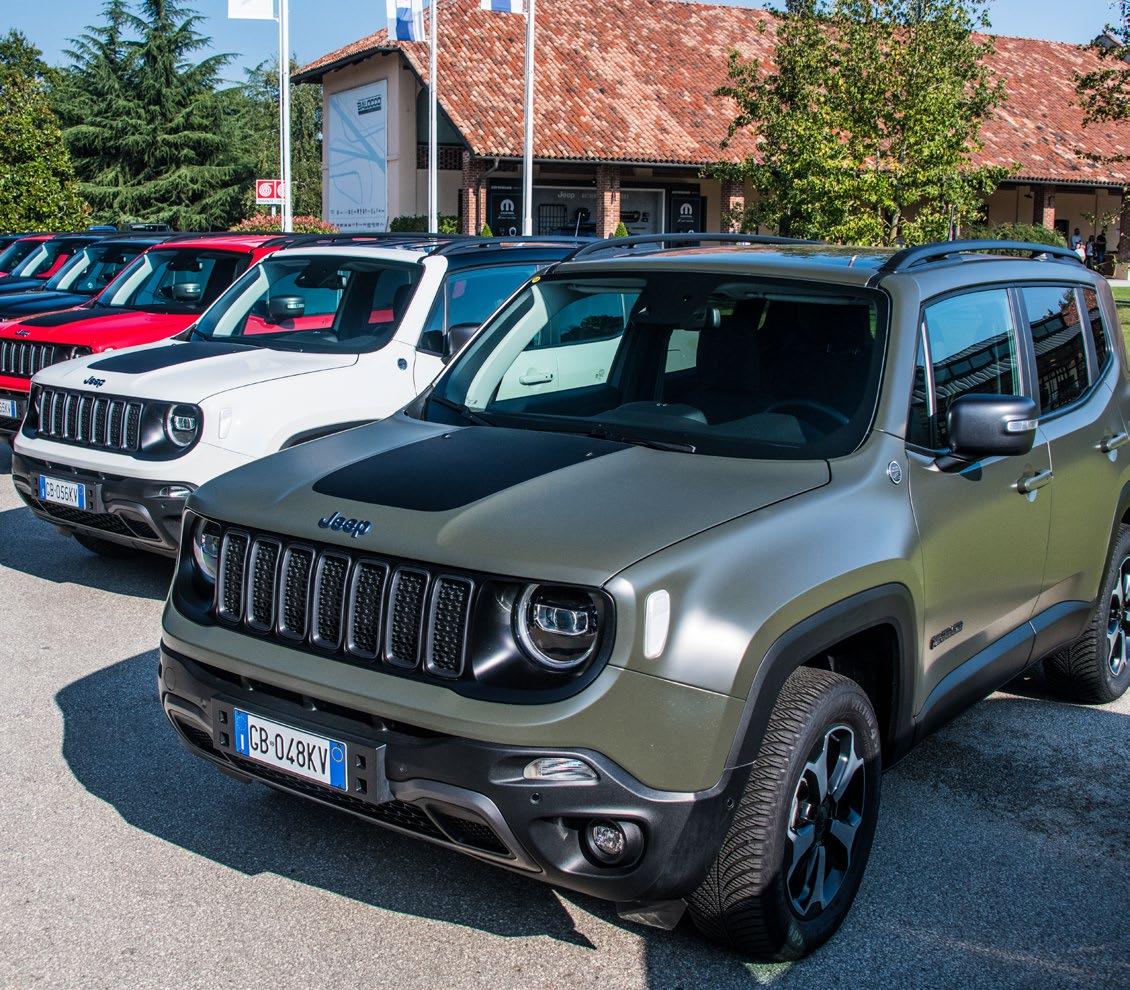
The 2WD versions are popular as urban SUVs, competing with the likes of the Ford EcoSport and Toyota Rav4 (and beating both of those in terms of price and feature list at the same time). It was and is both a ‘sensible’ family car and quite distinctive.
Six years later it is admittedly starting to look a bit dated, but has attracted a quite staggering 1.2million buyers worldwide, with the USA and Europe accounting for roughly one third of sales each.
To put that into context Land Rover can only just about beat that sales figure WITH EVERY MODEL COMBINED over the same period.

There are detractors who will dismiss it as a rebodied Fiat 500 L. It is not. The FCA group, which owns both Fiat and Jeep, are obviously very economically savvy so there are components, panels, engines, gearboxes and even complete drive-trains found in more than one vehicle. It just makes sense and keeps the accountants happy.
Unlike the standard Renegade which can be bought as a basic two-wheel-drive, the Renegade 4xe is AWD only.
This is achieved with the 1.3l turbo petrol mounted upfront, almost unchanged from the non-plug-in model, and driving the front wheels. The 60hp Electric motor is mounted under the floor in the boot and powers the rear wheels. It should be noted that, even with this arrangement, there is still room to carry a spare wheel under the boot floor. I’m glad to see Fiat haven’t gone down the tube of glue with hopes-and-prayers to fix a flat tyre root.

Jeep’s design team have cleverly used the space, made available by removing the rear prop-shaft, to mount part of the 11.4kW battery bank. The remainder being mounted adjacent to the petrol tank. The 4xe has a slightly smaller petrol tank to accommodate this.

Unlike some mild hybrids the choice of powertrain is fully selectable by the driver: electric only, petrol only or hybrid. You can, if the battery is sufficiently charged, force it to drive electric only for around 26 miles, which, according to UK government data, is more than enough to cover the average 8 miles per journey that car drivers make. The same data indicates that almost half of all UK car journeys are under 25 miles.
As a default the vehicle will start in Hybrid mode, and select the most efficient use of petrol or electric according to the conditions and driving style. The FCA boffins did explain in great depth how this all works, all I can say that it is a good job we were standing up while looking at the vehicle and not sitting down in a classroom environment while this was going on, I definitely would have nodded off.
Just be assured that the built in electrickery makes it work.
“In HYBRID mode - the optimisation algorithm (HCP) guarantees system efficiency by modulating the joint intervention of the electric motors and internal combustion engine, according to the charge level of the battery. The HCP algorithm automatically modulates the torque distribution between the electric motors and the internal combustion engine. The internal combustion engine intervenes whenever the required performance exceeds that of the electric motor alone. The HYBRID mode driving optimisation algorithm is designed to manage the car in the most efficient configuration according to the following factors:
•Energy level (State Of Charge) of the battery pack •Electric motor and internal combustion engine efficiency maps •Requests for performance by the driver •Travel and environmental situations (gradients, ambient temperatures, etc.)
The intervention of the internal combustion engine while driving may depend on various combinations of these factors. When the battery charge level is low, the internal combustion engine is switched on to provide the required torque to the front wheels, making up for the lack of electric propulsion from the rear wheels.”

As mentioned above you’ll get around 26 miles on electric only, and be able to drive up to a limited speed of 81mph. A full recharge takes 5
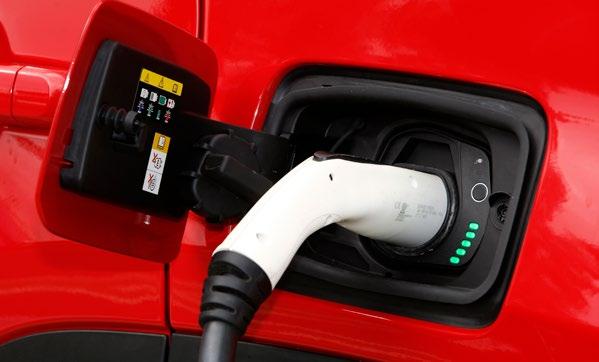
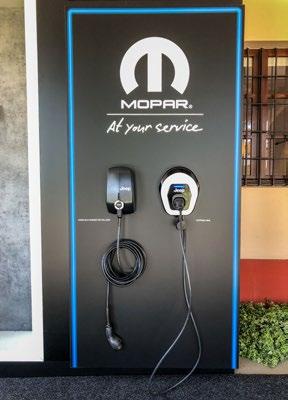

hours using a standard household plug-in charger. This can be reduced to under 2 hours with a fast charger. If you drove it to a point of full discharge and switch to petrol there are further options available using regeneration.
All hybrids and electric cars use regenerative breaking as standard, this means when you break during normal driving the kinetic energy is used to momentarily charge the battery, it might only be a very brief period but it adds up throughout a journey.
The built in eCoasting recharge runs alongside the regenerative breaking, and uses the vehicle’s inertia to charge the battery during the times we lift off the accelerator. This can be switched to ‘intense’ eCoasting to amplify the recharging efficiency if you need to get more power back into the battery pack for any reason.
Lets be specific Looking at the specification in a bit more detail the numbers stack up quite admirably for the Renegade 4xe:
The 1.3 litre turbo is available in 130hp or 180hp flavours, add the 60hp of the electric motor gives you a possible 240hp for the Trailhawk model. The all-important torque is plentiful in either mode: 250Nm from the electric motor and 270Nm from the petrol engine. This is linked to a six-speed automatic gearbox.
As I mentioned earlier there’s little difference under the bonnet of the Renegade to differentiate between standard and hybrid. The alternator has been replaced with a generator and that’s about it. 12v electric battery recharging is now handled by the battery pack.
The rear motor is part of an e-axle setup which also has a reduction gear and differential for off-roading. There is a selector knob to choose between Normal, 4WD lock, 4WD low and Hill Descent Control, in addition to the Auto, Snow, Mud and Sand and Rock modes.
The Renegade 4xe also gets a ‘Sport’ mode for ‘enhanced throttle response and steering’ although I couldn’t really judge whether this worked or not on our short test drive.
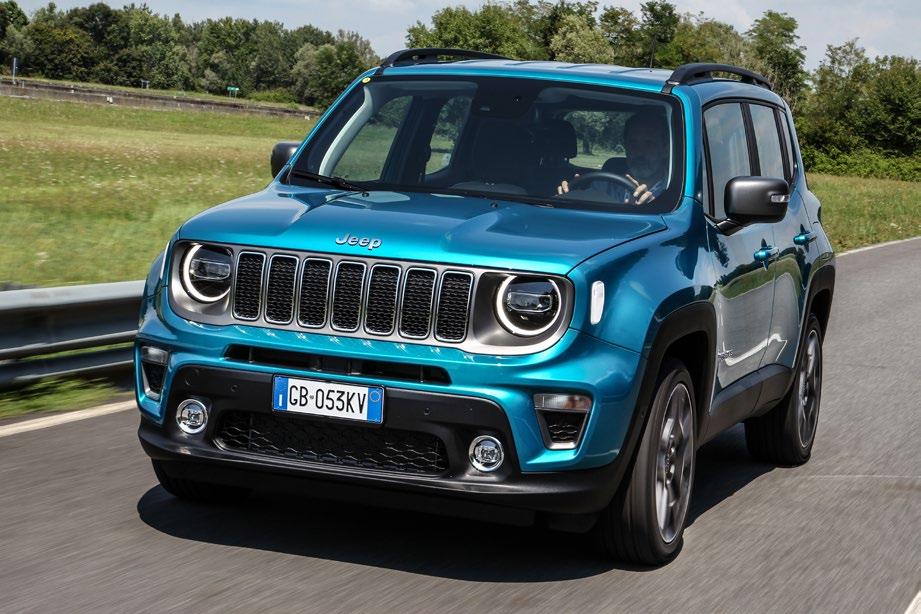


Off-road it handled better than expected. Although several of the more challenging sections of the Jeep off-road testing facility were roped off, this was more to preserve the test vehicles from over-enthusiastic journalists not realising their limitations rather than any lack of ability on the part of the Renegade. Steep climbs, sharp descents, side inclines, wading and cross-axle sections were all tackled with a calm and measured ease as you’d find in anything other modern 4x4.

Just as Land Rovers have off-road ability etched into their very DNA so do Jeep vehicles. Jeep is very proud of its ‘Trail Rated’ classification and to be labelled as such a vehicle must perform to a certain standard, and be able to tackle the same obstacles as every other ‘Trail Rated’ model. So when you see this moniker attached to a Renegade you should be assured that it will be able to drive the exact same route as a similarly labelled Wrangler.
Personally I don’t doubt for one second that the Renegade is perfectly up to this task.
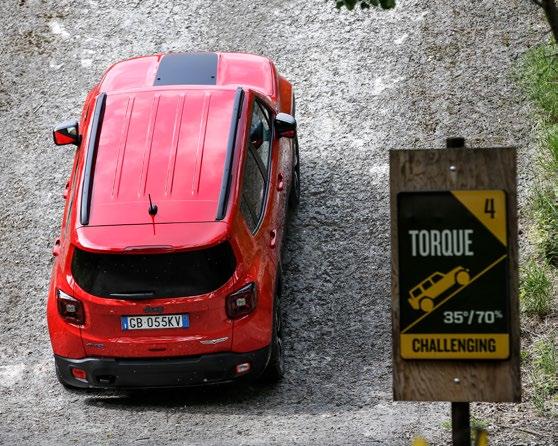
If you do intend to fit in a fair bit of off-road driving then the Trailhawk model is the one to order. This has the 180hp engine as standard and a whole raft of additional underbody protection The Renegade comes with two home-charging options, both supplied by ENGIE EPS. The standard plug in charger uses a normal domestic three-pin outlet and requires no additional installation other than perhaps a couple of screws to mount it to a garage wall. This will fully charge the 11.4kW battery in around 5 hours. The optional ‘fast’ charger needs to be professionally installed, but also reduces the full-charge time to well under two hours.
All of the charging options can be controlled using the 8.4inch touch screen dash, or the U-connect app, to make the most of lower-cost, overnight charging. The app can also be set to prewarm the vehicle in the colder months to have it fully ready to go for your morning commute.
Would I buy one?
For the times when you are away from home, Jeep also have an agreement with Digital Charging solutions to give customers access to a network of charging stations nationwide. The smartphone app will find the nearest charging point for you and you can book and pay for it via the app.
Yes, if I had the money. Prices range from £32,500 for the Longitude variant to £36,500 for the Trailhawk model. That is almost a £4,000 premium over the non-hybrid Trailhawk, which would, according to my back-of-an-envelope calculations pay for around 23,000 miles worth of diesel!
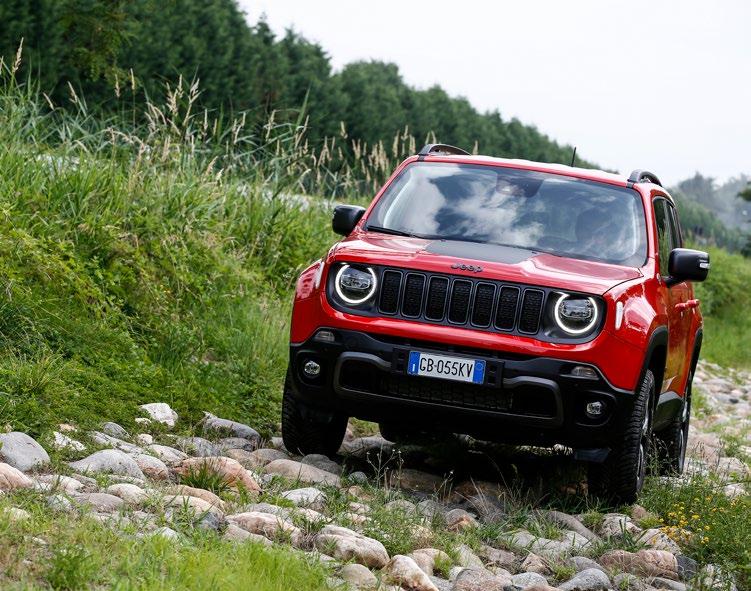
Therefore the hybrid version only really makes economic sense if you make a lot of shorter journeys to make the most of electric-only driving. However, the ‘economics’ are not the only argument for switching to electric or hybrid. It will not be long before petrol and diesel cars are restricted or charged a fee to enter town centres and many areas already offer priority parking for plug-in cars.
Then there’s the whole ‘let’s try not to destroy the planet’ thing that we all need to get onboard with.

Off-road the Renegade will outperform almost any ‘urban’ SUV you might be tempted to buy, the trade-off is that around town it is far less refined than, say a Toyota Rav4.
The only slight niggle for me is towing capacity. It is too light to be useful for anything other than taking a trailer to the tip. You’d be restricted to a very lightweight caravan, for instance, to get under the recommended 85% of the stated 1,200kg limit of the Renegade 4xe. The 2.0 litre diesel Renegade has a much more useful 1,500kg towing limit.
For a family ‘Adventure Bus’ that could also be used for commuting and shopping trips, the Renegade 4xe would fit the bill nicely, but the forthcoming Wrangler Hybrid looks like a much more interesting, if crazily expensive, alternative.










